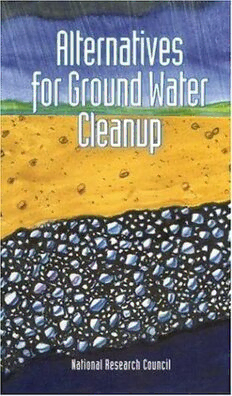
Alternatives for Ground Water Cleanup PDF
334 Pages·1994·5.694 MB·English
Most books are stored in the elastic cloud where traffic is expensive. For this reason, we have a limit on daily download.
Preview Alternatives for Ground Water Cleanup
Description:
There may be nearly 300,000 waste sites in the United States where ground water and soil are contaminated. Yet recent studies question whether existing technologies can restore contaminated ground water to drinking water standards, which is the goal for most sites and the result expected by the public. How can the nation balance public health, technological realities, and cost when addressing ground water cleanup? This new volume offers specific conclusions, outlines research needs, and recommends policies that are technologically sound while still protecting health and the environment. Authored by the top experts from industry and academia, this volume examines how the physical, chemical, and biological characteristics of the subsurface environment, as well as the properties of contaminants, complicate the cleanup task. It reviews the limitations of widely used conventional pump-and-treat cleanup systems, including detailed case studies. It evaluates a range of innovative cleanup technologies and the barriers to their full implementation. It also presents specific recommendations for policies and practices in evaluating contamination sites, in choosing remediation technologies, and in setting appropriate cleanup goals.
See more
The list of books you might like
Most books are stored in the elastic cloud where traffic is expensive. For this reason, we have a limit on daily download.
